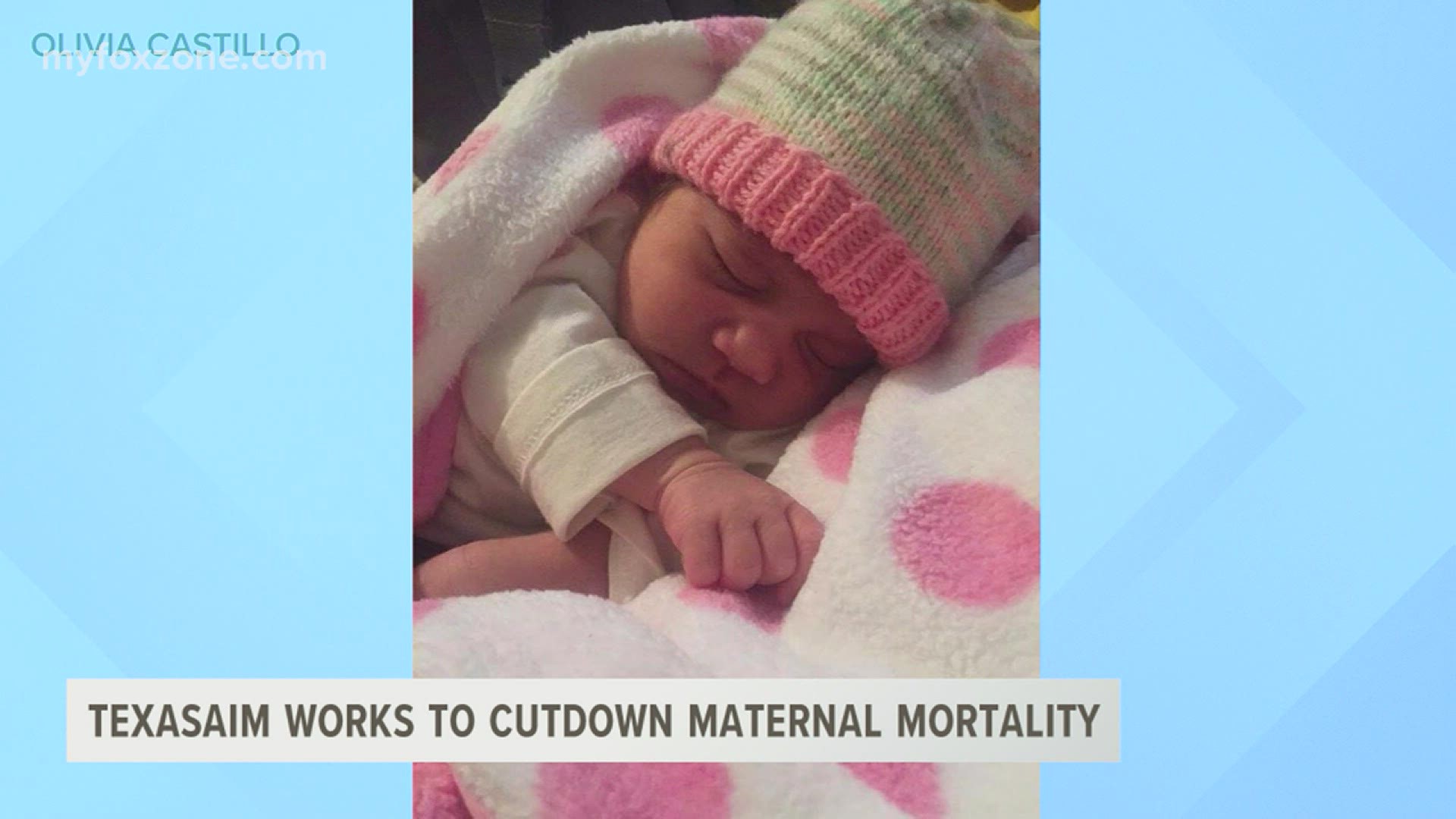TEXAS, USA — Texas has been in headlines for the number of women who die from childbirth in the state.
The problem
The Centers for Disease Control and Prevention previously reported 148 women died in 2012, within 42 days of giving birth. The State of Texas later disputed the data as bad reporting, but it was clear maternal mortality was rising in Texas.
The solution
In 2016, the Texas Department of State Health Services gave the state legislature recommendation for the maternal mortality and morbidity review committee. Its recommendation was to create a program to standardize maternal care across hospitals in the state.
DSHS started TexasAIM, or the Alliance on Improvement for Maternal Health. TexasAIM releases bundles, resources for hospitals on common complications maternal patients may experience, leading to medical emergencies.
“They're really often transforming their care, so it requires a lot of process improvement and some culture change and teamwork and communication and a redesign of their patient care delivery,” Julie Stagg, Healthy Texas Mothers and Babies nurse branch manager said.
Stagg coordinates TexasAIM for DSHS.
The first bundle, introduced in 2018, focused on maternal hemorrhaging. More than 90 percent of hospitals designated to deliver babies voluntarily participated, including Hendrick Medical Center in Abilene.
Michelle Owens, the nurse manager of the labor and delivery unit, said the program has improved the level of care Hendrick Birthing Center is able to give.
“The whole reason for Texas AIM is because we have a very high maternal mortality and morbidity rate in the state,” Owens said. “And so, this initiative is the way the state is saying that it's very important for our maternal patients to be well cared for and that we are giving them the best opportunity to have these babies go home with a safe and healthy mom as well.”
Data from the hemorrhaging bundle was released to the state legislature earlier this session. The results are promising. The report stated hospitals showed a 14 percent decrease in severe maternal morbidity cases related to hemorrhaging.
Stagg says hemorrhaging still happens, but is now caught sooner.
In 2015, Olivia Castillo of Abilene survived severe complications during birth including hemorrhaging. She was given nine liters of blood and seven liters of plasma before the bleeding could be staunched.


“I lost so much blood and I couldn't breathe. I almost died that day and she almost did not make it,” Castillo said. “And my sister-in-law, Ashley, was holding my hand saying I was going to be okay. I started bleeding out. They couldn't get the bleeding to stop and my doctor had to go get somebody else because they couldn't stop the bleeding.”
When the bleeding was stopped, Castillo began suffering from high fevers. Doctors later discovered she also had a pulmonary embolism. Castillo spent two weeks in the intensive care unit before she was able to go home.
Castillo was only 21 at the time and not aware she was pregnant until she was six months along. She said she had a great pregnancy experience with no morning sickness and no pain besides Braxton Hicks contractions.
Castillo’s daughter Mallory was born healthy, but premature. She is now a five-year-old with a little sister. Castillo wants other moms who may have experienced the trauma of a complicated delivery to know they are not alone.
“I really hope no one has to go through what I did,” she said. “Just make sure you have a good support system. Stay strong.”


Next steps
The next bundle from TexasAIM is on hypertension. The program is actively enrolling hospitals. Hendrick Medical Center is already signed up. Owens said the resources already available are changing the way prenatal care providers look for and communicate risk factors to labor and delivery staff.
“So, hypertension and pregnancy is can be a very risky situation. It can lead to permanent kidney damage sometimes. It can also lead to placental abruption, which can become life-threatening very quickly,” Owens said. “So, we really encourage all of our patients to obtain prenatal care early and then continue with their prenatal care throughout the pregnancy and allow us the opportunity to be able to catch things like that very early in the pregnancy, but also to prepare for their delivery and help mitigate those risk as much as possible.”
TexasAIM is now working to bring out its next bundle focusing on obstetric care for women with opioid use disorder.
For more information about TexasAIM, visit dshs.texas.gov/mch/texasaim.aspx.

